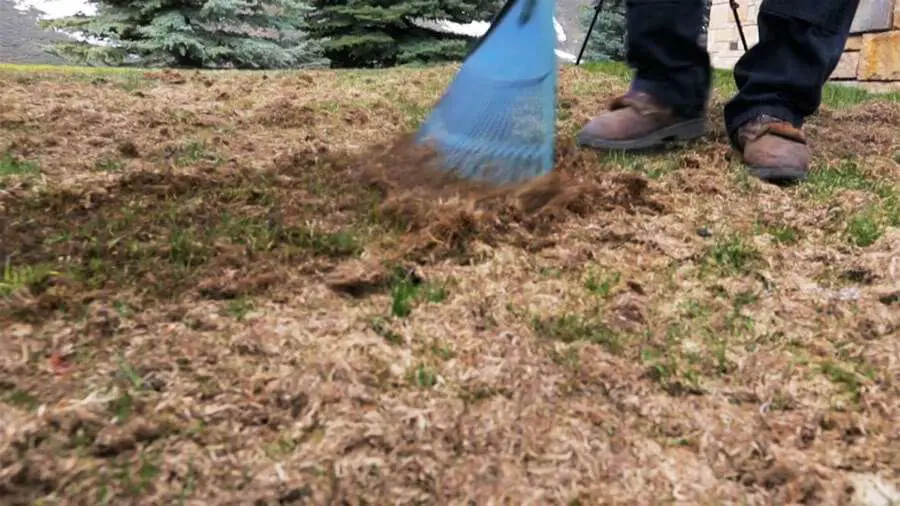As homeowners, the lush, emerald expanse of our lawns often brings us immense joy and tranquility. However, the sight of unsightly brown patches and telltale runways can shatter this idyllic vision, leaving us feeling disheartened and defeated. If you’ve noticed these telltale signs, it’s possible that your lawn has fallen victim to the mischievous machinations of voles. These tiny rodents, often mistaken for mice, can wreak havoc upon your once-beautiful turf, creating unsightly damage that can be frustrating to repair.

Image: turfcareonline.com
Yet, despair not! With a proactive and empathetic approach, it is entirely possible to restore your lawn’s health and vitality. In this comprehensive guide, we’ll explore the nuances of vole damage, empowering you with the knowledge and practical strategies to heal your lawn’s wounds. Together, we’ll embark on a journey of restoration, transforming your damaged turf into a verdant oasis once more.
Understanding the Nature of Vole Damage
Voles, although small in stature, are remarkably skilled at causing extensive damage to lawns. These voracious herbivores primarily feed on grasses, using their sharp teeth to clip the blades at ground level. Over time, this constant nibbling can decimate entire sections of your lawn, leaving behind unsightly brown patches. In addition, voles create intricate runway systems beneath the soil’s surface, resulting in raised ridges that further mar the lawn’s appearance.
To accurately identify vole damage, carefully examine your lawn for the following telltale signs:
- Irregularly shaped brown patches, often accompanied by chewed grass blades.
- Distinct runway systems, consisting of raised ridges crisscrossing the lawn.
- Small, round holes in the soil, marking the entrances to vole burrows.
- Vole droppings, which resemble tiny black pellets, scattered throughout the affected areas.
Devising a Comprehensive Vole Control Strategy
Once you’ve confirmed vole damage, prompt action is crucial to prevent further destruction. Employing a multi-faceted approach that combines exclusion, habitat modification, and humane trapping can effectively safeguard your lawn from these persistent pests.
-
Exclusion: Vole-proof fencing is a highly effective method of keeping voles out of your yard. Install a fence made of sturdy wire mesh, burying it at least 12 inches below the ground to prevent voles from digging underneath. Ensure the fence extends a few inches above ground level as well, to deter climbing attempts.
-
Habitat Modification: Voles thrive in areas with dense vegetation and ample hiding spots. Reduce their presence by regularly mowing your lawn, trimming overgrown bushes, and eliminating piles of debris and compost.
-
Humane Trapping: If exclusion and habitat modification prove insufficient, consider humane trapping as a last resort. Place baited live traps in areas where vole activity is evident. Once captured, release the voles far away from your property to prevent them from returning.
Restoring Your Lawn’s Health and Vitality
With the vole population under control, it’s time to focus on restoring your lawn’s health. Implement the following steps to promote lush regrowth and rejuvenate your turf:
-
Aeration: Vole infestations can compact the soil, making it challenging for grass roots to absorb nutrients and water. Aerate the affected areas using a core aerator to alleviate compaction and promote healthy root development.
-
Fertilization: Provide your lawn with the essential nutrients it needs for robust growth. Choose a balanced fertilizer, following the application instructions carefully to avoid burning the grass.
-
Re-seeding: For severely damaged areas, re-seeding may be necessary to restore a thick, lush lawn. Choose a grass seed mix suitable for your climate and soil conditions, ensuring proper preparation and care for optimal germination and establishment.
-
Water: Regular watering is essential for healthy lawn growth. Water deeply and consistently, especially during hot, dry periods. Avoid overwatering, as this can promote disease and attract other pests.

Image: www.lovemylawn.net
How To Fix Vole Damage Lawn
Envision a Verdant Lawn Reborn
By following these comprehensive strategies, you will empower your lawn to recover from the ravages of vole damage. With patience and consistent effort, you’ll watch with delight as verdant blades of grass gradually reclaim the damaged areas, transforming your lawn into a healthy, vibrant oasis once more.
Remember, the journey of lawn restoration requires empathy, perseverance, and a deep understanding of your lawn’s unique needs. By embracing these principles, you’ll not only heal the wounds inflicted by voles but also foster a thriving environment for your lawn to flourish for years to come.